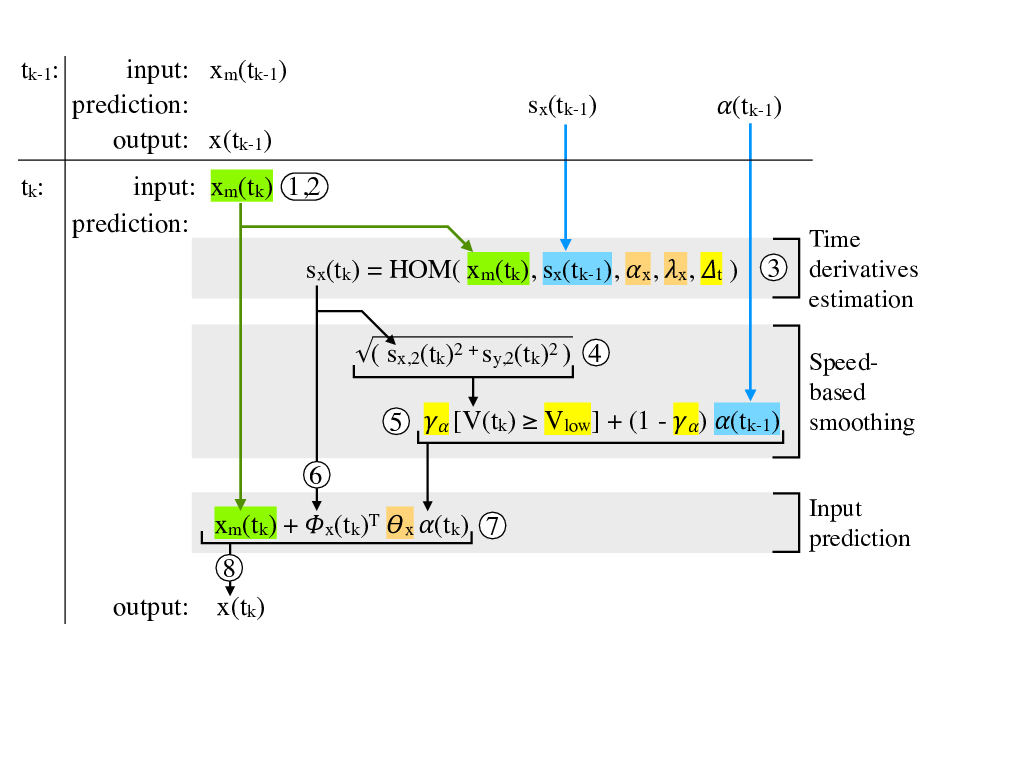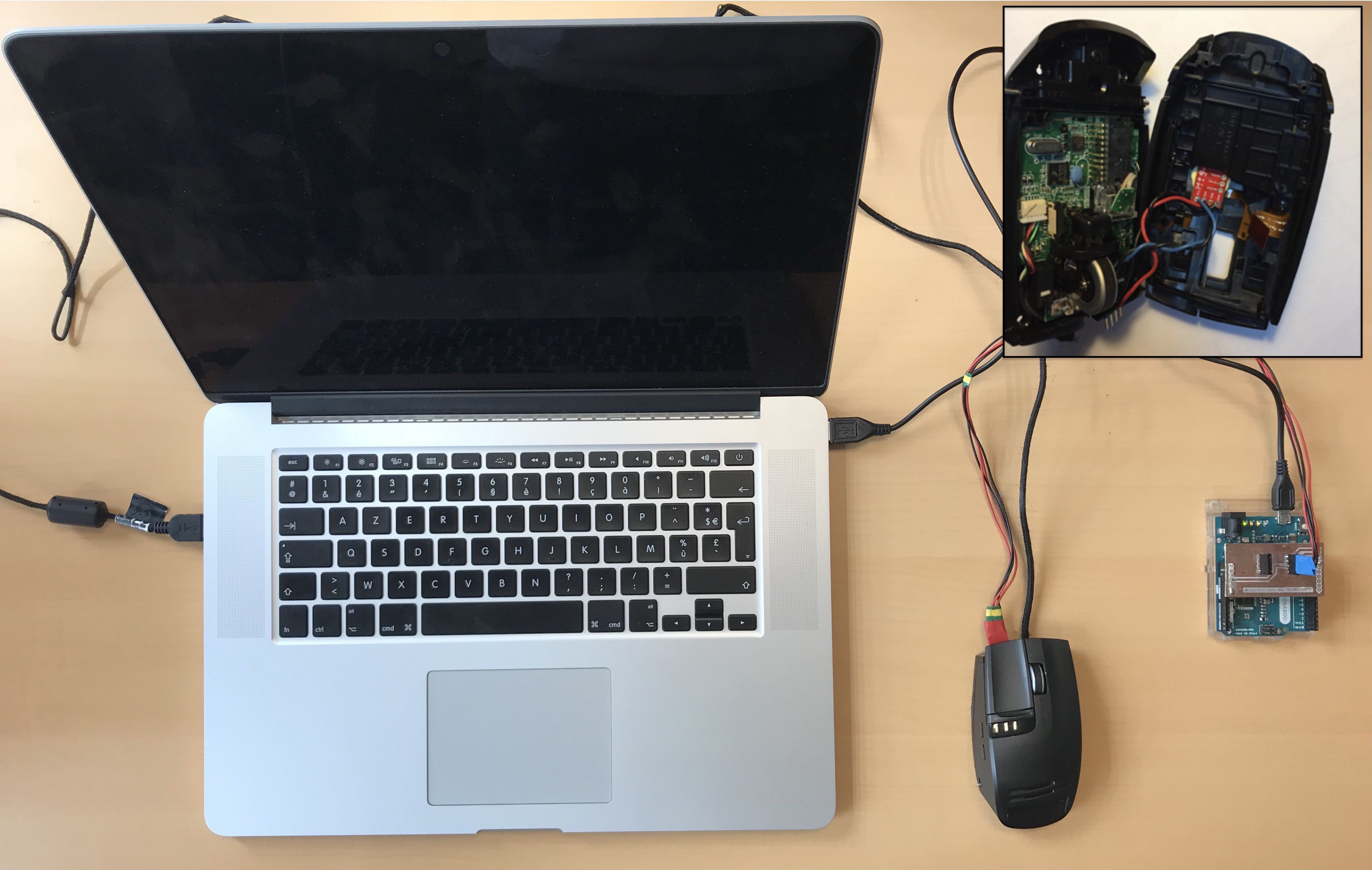Section: New Results
Micro-dynamics
Participants : Axel Antoine, Géry Casiez [correspondent] , Sylvain Malacria, Mathieu Nancel, Thomas Pietrzak.
Latency & Transfer functions
End-to-end latency in interactive systems is detrimental to performance and usability, and comes from a combination of hardware and software delays. While these delays are steadily addressed by hardware and software improvements, it is at a decelerating pace. In parallel, short-term input prediction has recently shown promising results to compensate for latency, in both research and industry.
in the context of the collaborative Turbotouch project, we introduced a new prediction algorithm for direct touch devices based on (i) a state-of-the-art finite-time derivative estimator, (ii) a smoothing mechanism based on input speed, and (iii) a post-filtering of the prediction in two steps (see Figure 2 left). Using both a preexisting dataset of touch input as benchmark, and subjective data from a new user study, we showed that this new predictor outperforms those currently available in the literature and industry, based on metrics that model user-defined negative side-effects caused by input prediction. In particular, our predictor can predict up to 2 or 3 times further than existing techniques with minimal negative side-effects [23].
|
We also proposed a hybrid hardware and software input prediction technique specifically designed for partially compensating end-to-end latency in indirect pointing (see Figure 2 right). We combined a computer mouse with a high frequency accelerometer to predict the future location of the pointer using Euler based equations. Our prediction method results in more accurate prediction than previously introduced prediction algorithms for direct touch. A controlled experiment also revealed that it can improve target acquisition time in pointing tasks [15], [28].
Finally, on the topic of transfer functions we performed some preliminary analysis of the kinematics of a pointing task with varying linear velocity based transfer functions to assess how we use vision and haptics to plan and control our movement [25].
Understanding touch interaction
Atomic interactions in touch interfaces, like tap, drag, and flick, are well understood in terms of interaction design, but less is known about their physical performance characteristics. We conducted a study to gather baseline data about finger pitch and roll orientation during atomic touch input actions [21]. Our results showed differences in orientation and range for different fingers, hands, and actions: for a given hand, the little, ring and middle fingers are used in a similar manner, whereas the thumb uses different range of orientations. Additional analyses about how changing the angle of the tablet affects people’s finger orientations suggest that ranges of orientation tighten as the tablet pitch increases. This data provides designers and researchers with better understanding of what kind of interactions are possible in different settings (e. g., using the left or right hand), to design novel interaction techniques that use orientation as input (e. g., using finger tilt as an implicit mode), and to anticipate the feasibility of new sensing techniques (e. g., using fingerprints for identifying specific finger touches).




